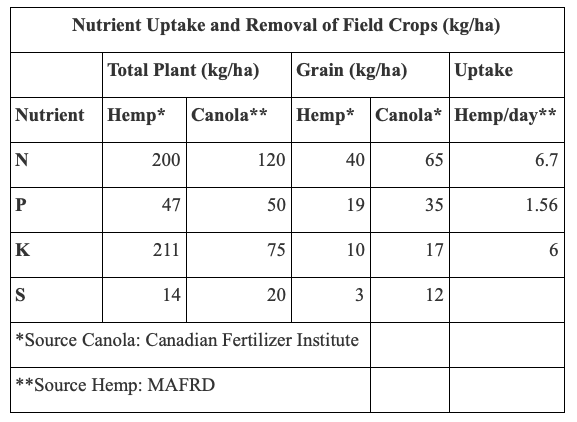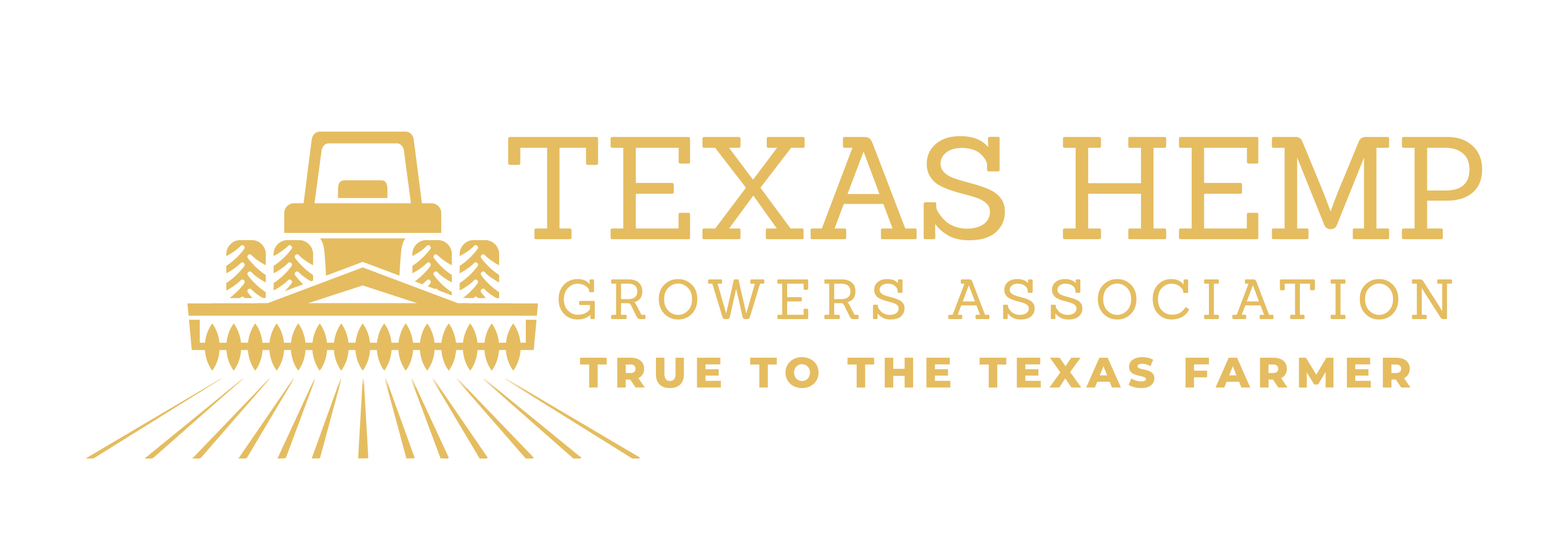Nutrient Analysis
Soil Nutrient Analysis
Soil testing is strongly recommended to determine existing nutrient levels in the soil prior to fertilizer applications. Hemp has a large root capable of penetrating deep in the soil profile to recover nutrients that may be lost to many other crops; therefore, soil testing to the 24 inch level is recommended to identify possible nutrient reserves found lower in the soil profile. A soil test will give recommendations for additional nutrient requirements to achieve target yields. Until more research is completed in the area of fertility, follow the recommendation requirements for a high yielding, high protein wheat, corn or canola crop.
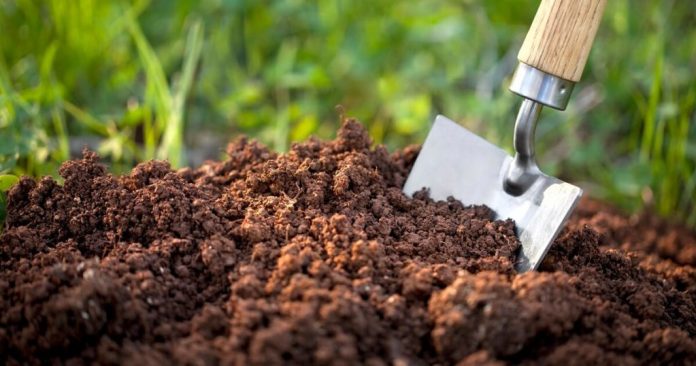
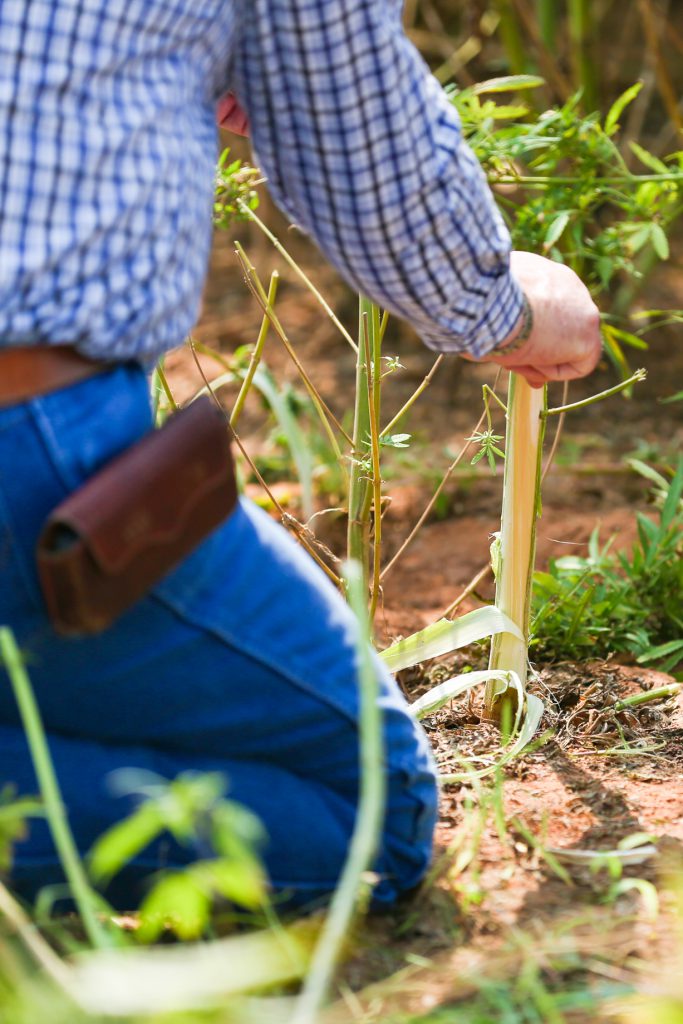
Plant Nutrient Analysis
Crop nutritional status can also be assessed by plant tissue analyses. This will supplement, but not replace, soil testing. Tissue analysis measures the nutrient content of the above ground plant parts during growth at a specific time during the growing season. Tissue testing is suitable for diagnosing crop problems that may be nutritionally related, including any nutrients that may be limiting yields. Plant analysis (top new growth of the hemp plant) can determine if the fertilizer rate and method of application were adequate to meet crop needs. The timing of tissue testing, and results received may be too late to correct deficiencies in the current crop. Tissue testing methods for hemp are similar to other crops. You need to be aware that there are currently no “expected” or range of values for nutrients at certain growth stages in hemp. The closest crop comparison would be canola.
Nutrient Use
Nitrogen
Hemp removes or uses a total of 200 actual kg/ha of nitrogen; 40 kg/ha is removed in the seed and 160 kg/ha in the stalk. If the hemp is grown for both grain and fiber production, there will be a large amount of nitrogen removed from the field and growers need to be cognizant of nitrogen requirements for the next production year.
The retting process of the straw allows nutrients like nitrogen and potassium to be leached out and accumulate in the soil under the swaths. Of all the nutrients, phosphorus has the highest percentage stored in the seed. The other nutrients are more inclined to be stored in the stalks.
Depending on the variety, hemp will grow 7 to 10 cm a day during its vegetative stage in July to early August. During this development stage, the maximum rate of nitrogen uptake is about 6.7 kg N/ha/day. Phosphorus uptake is about 1.56 kg P2O5/ha/day.
Hemp seed, as with other crops, will be sensitive to seed-placed nitrogen fertilizer. It is recommended that nitrogen be broadcast, side-banded, mid-row-banded or banded in a separate operation.
Phosphate
Hemp is a high user of phosphate and it is essential to have phosphate in an available form early in crop establishment and during the growing season. Phosphate is immobile in the soil so close association to hemp roots is essential. Phosphate management trials in the past have shown that hemp does have some tolerance to seed placed P2O5. Soil type, soil moisture and seed opener spread all have an effect on seed placed phosphate, so caution should be used to find a rate that is suitable with your conditions and equipment.
Some limited research has been conducted on phosphate fertility in hemp (PCDF).Two years of trials indicate a reasonable tolerance to seed placed phosphate. Under ideal growing conditions, plant population and grain yield was not affected by increasing the rates of P2O5 up to 50 pounds actual per acre. At the suggested rate of 31 to 40 pounds/acre and good growing conditions, damage is not expected to hemp seedlings in a clay loam soil with an offset disc opener.
Seed placed phosphate can cause loss of germination if there is less than ideal conditions such as cool soils, dry or wet compacted soils. Seed placed fertilizer could cause extra stress on the young plants and increase the plant mortality under diverse conditions. More research is required to understand phosphate placement and hemp production.
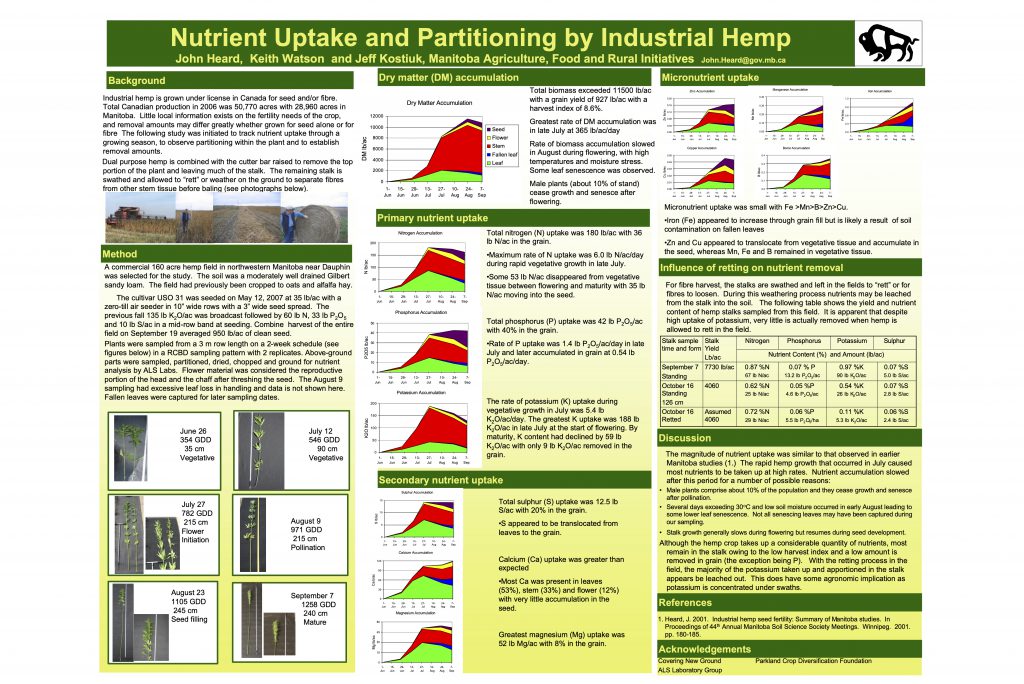
Reference: Nutrient Uptake and Partitioning research paper by MAFRI and PCDF
Micronutrients
Micronutrients are nutrients required in extremely small quantities (less than 100 ppm in plant dry weight). The basic functions of micronutrients are less understood than macronutrients. Micronutrient deficiencies in hemp are less common than macronutrient deficiencies and part of this may be due to the lack of documentation and reporting. More research and documentation of micronutrient identification, deficiencies and yield effects is required.
Application Rates
General rates for the total amount of each nutrient to target in dryland production (actual):
- Nitrogen 90 to 135 kg/ha
- Phosphorus 45 kg/ha
- Potassium 65 kg/ha
- Sulfur 15 kg/ha
*These rates include soil supplied nutrients plus applied.
Factors that affect nutrient uptake and removal include:
- environmental and growing conditions
- seeding date
- soil pH and salinity
- excess soil moisture and soil compaction restricting the aerobic ability of the soil
- varietal differences
